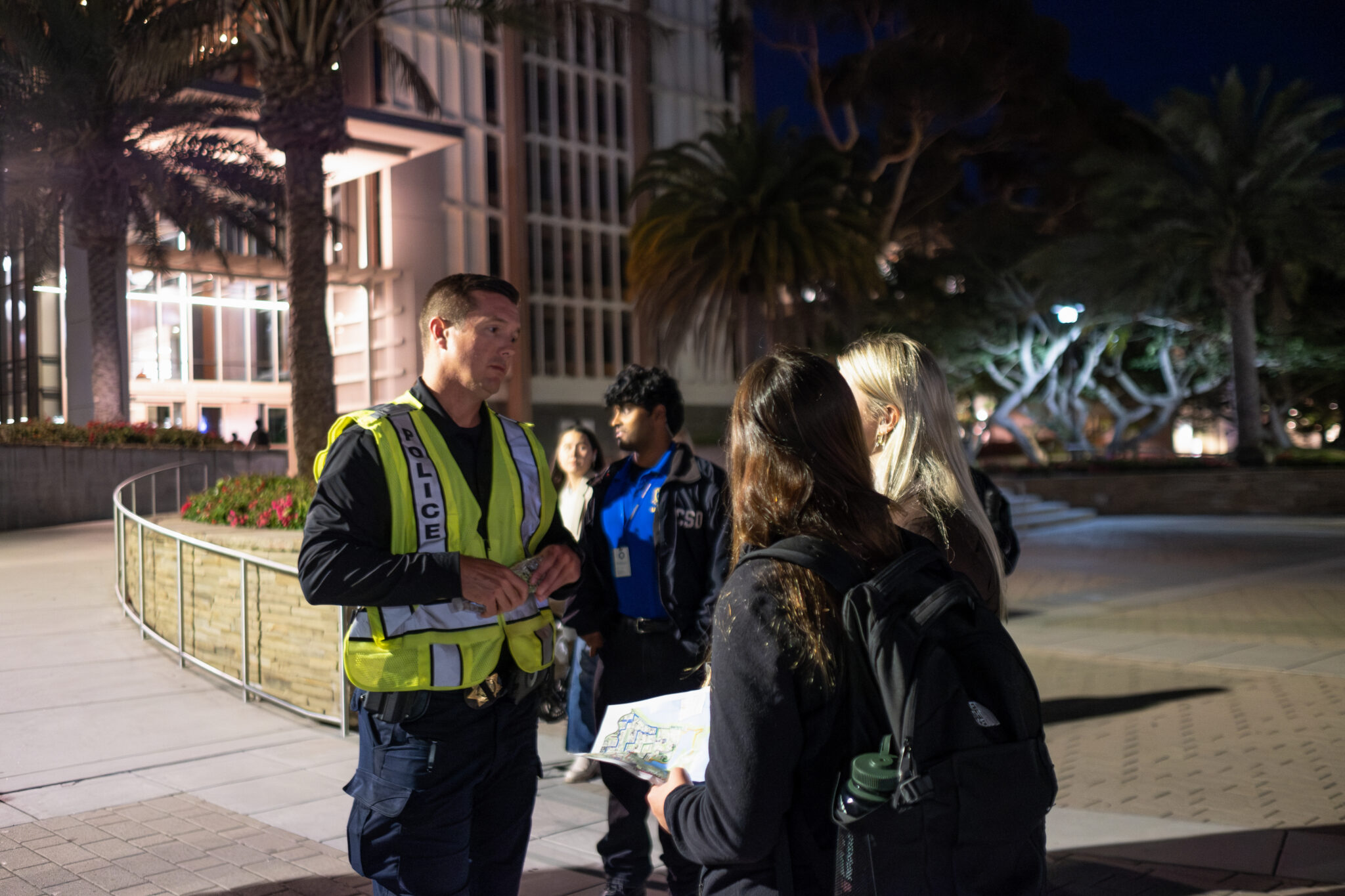Student Safety Partners led students, community members and administrators on their annual Lighting and Safety Walk on Nov. 5. The lagoon was added to the walk for the first time in response to a recent sexual assault in the area.

Student Safety Partners recorded the coordinates of areas of concern. Declan McFarland / Daily Nexus
Every year, the UC Police Department (UCPD) hosts safety walks to document safety concerns from students and community members. Student Safety Partners (SSPs), who are employed under UCPD’s Community Service Organization, recorded the coordinates of areas where increased lighting is needed, where plants should be trimmed and other places that attendees felt concerned about.
UC Santa Barbara has seen an increase in reported crimes on campus in the past three years, especially for violent crimes such as rape and dating violence. Most recently, on Oct. 19, an unknown individual attempted to sexually assault a person near the lagoon.
Roughly 30 attendees from organizations, including the Associated Students (A.S.) Senate, UCSB Facilities Management, UCSB Housing, Dining & Auxiliary Enterprises, UCSB Communications Services, A.S. Take Back the Night and UCSB Student Affairs met with organizers by the Arbor to learn how the walks would work. UCPD Corporal Ariel Bournes then instructed attendees to split into four groups to walk the different routes, including near the lagoon, west campus, north campus and east campus.
UCPD Interim Chief of Police Matthew Bly spoke first by thanking everyone in attendance for being able to provide input contributing to improved safety.
“Campus safety [and] community safety really takes a community effort, and if nothing else that we get out of this effort tonight, we really want to hear from each of you,” Bly said. “The beauty of this event is not only what we have planned out as far as the four different routes of travel, but the sidebar conversations that this environment allows us to have with each one of you.”

Interim Campus Police Chief Matthew Bly said the safety walk allows community members to directly express their concerns around the area. Declan McFarland / Daily Nexus
The lagoon route began by the lawn outside of the University Center, continuing in the direction of Manzanita Village Residence Hall, passing by Campus Point until the entire area was covered.
SSPs and attendees immediately spotted a broken light post on the route. Throughout the walk, community members pointed out a variety of safety concerns which SSPs recorded, including inadequate lighting, landscape and sidewalk improvement and suggestions for blue light placements.
The additional route around the lagoon was a response to a trend of reported incidents in the area. Bly said the safety walk allows community members to directly express their concerns around the area.
“We’re specifically listening to students who have come to us with concerns about general safety around the lagoon area, and we thought it would be a good opportunity to make an assessment with the participants that we have with us this evening and hear directly from our students as far as what concerns them,” Bly said.
During the walk, A.S. First President Pro Tempore and second-year political science major Evan Sussman brought attention to “lagoon island,” or a peninsula with a beaten path which wasn’t initially present on the route. With “lagoon island” being a predominantly unlit and overgrown area, Sussman suggested blue lights in the area and improved lighting.
A.S. Off-Campus Senator and second-year political science major Erica Sherkin came on behalf of the Senate in order to “be in the community” and directly listen to their concerns. She spoke on the importance of the implementation of the lagoon route following the most recent reported sexual assault.
“I would just think this is very pressing. And the fact that we’ve been on this walk and we’ve had to stop repeatedly, we see the need for lighting and safety measures,” Sherkin said.
At the end of the walk, Bly expressed he was “more pleased” with the west side of the route, given there was more adequate lighting. The lagoon route concluded just after 8 p.m., taking an additional 40 minutes compared to the other routes, according to Bournes.
A version of this article appeared on p. 3 of the Nov. 13 print edition of the Daily Nexus.




















